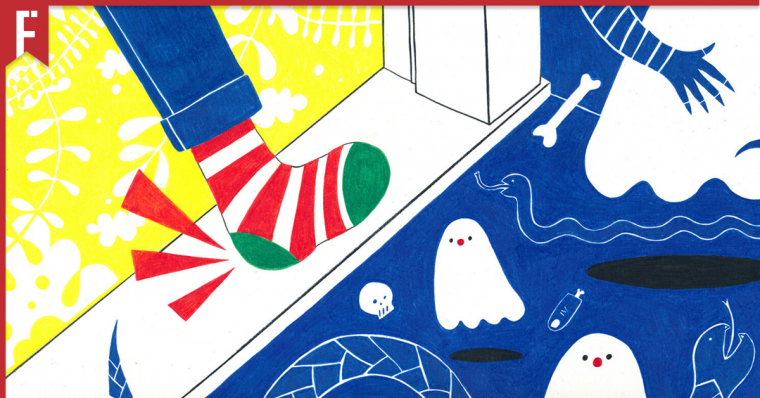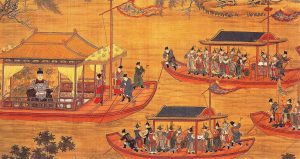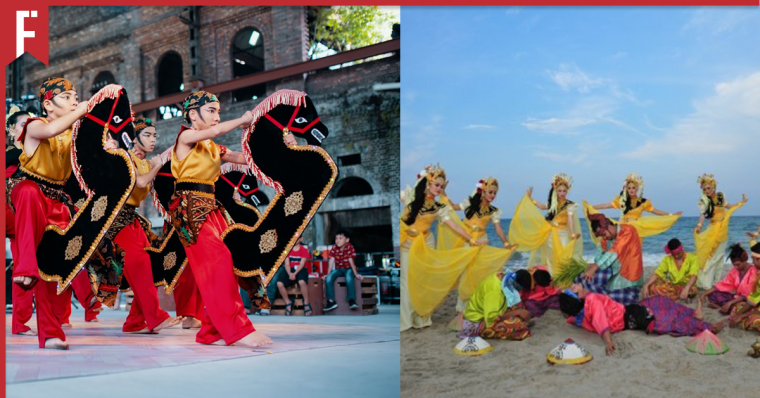
What do you think of when you hear “Malaysian traditional dances”?
For me, it’s probably Zapin. Mostly because very recently, I just saw a Zapin competition recommended on my Youtube sidebar. It was interesting and made me wonder what other Malaysian dances are out there. Which then led me to the discovery of these so-called “possessed” dances.
Okay, hold on, let me explain. if you aren’t Malaysian, your first thought must have been “um, sorry, what? Did you say possessed?!” I did, yes. Over here in Malaysia, we have quite a number of dances that are believed to require possession to be performed well. By this, I mean literal spiritual possession — the ghost kind.
Yeah, it sure is something. You might not see these dances up on stage very often, if at all, really. Nowadays, a lot of these are either banned or generally frowned upon, so people avoid them. But nonetheless, the interest of people towards these dances are still apparent from time to time. Hence, this article. So, let me take you down memory lane and brush up your memories on some of Malaysia’s unique spiritual dances.
Kuda Kepang
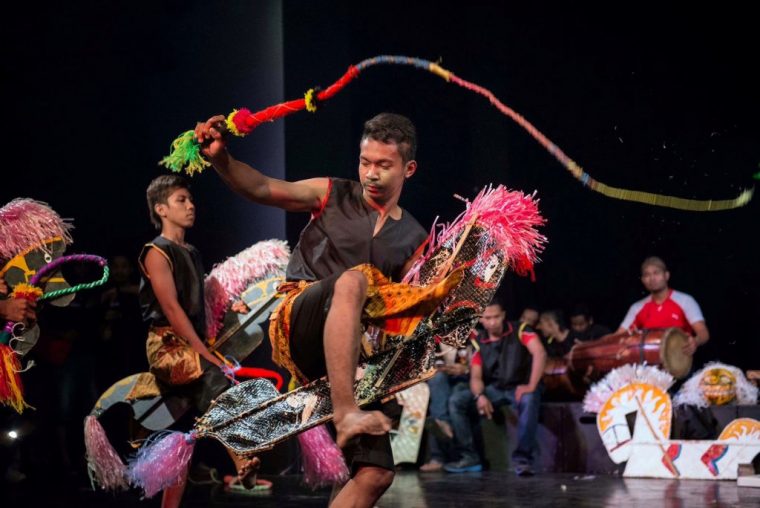
Let’s start with a classic, shall we? Kuda Kepang was originally from West Java, Indonesia and went by the name Kuda Lumping. But it’s made really popular in Johor when it migrated there from the 1800s.
If I’m being honest, watching multiple videos of this dance left me in awe. I’m not even sure if that’s the right word, actually. What’s the word for amazed and disturbed? The whole dance was so intense, so expressive, so… violent.
The dancers appear to be in a trance as they’re possessed by the spirits of the dance. While they move along to the sounds of the drums, they also perform multiple acts to prove their strengths.
Their skins are so kebal (tough) that you can’t help but flinch when you watch as they beat each other up with whips and swallow down pieces of broken glass. Yes, they actually bite down on glass, chew the shards and proceed to swallow them — and continue to do so until there isn’t any glass anymore! It’s like watching a magic show.
The dance originally performed to ward off evil spirits in weddings or big events. But nowadays, it’s only performed during special occasions and cultural performances. I’ve only seen one Kuda Kepang performance my whole life before watching any Youtube videos and it scared me quite a bit. The dancers of Kuda Kepang continued to perform those unbelievable acts and were only “let go” by the spirits after a bomoh was called to the scene. Otherwise, they would have to dance for hours on end.
Tarian Dabus
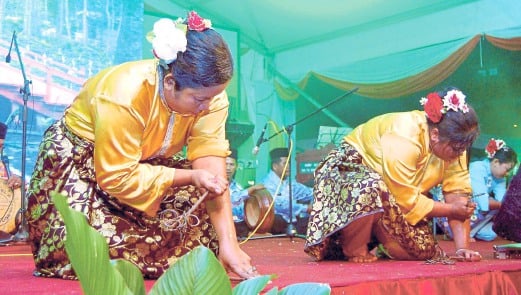
Popular in Perak, Tarian Dabus is a warrior dance that has roots in Sumatran and also the Middle East. The dance dates back to over 300 years ago and is nearly extinct since a lot of people don’t really favour it anymore. There are a lot of versions of this dance and people interpret it in different ways based on which region you’re in. The dance is said to be performed to show the braveness of Perak warriors to the people in the castle.
It was not originally a dance but an art of self-defence, kind of like Silat. When the person dances with the music, they’re usually accompanied by a sharp object in hand where they occasionally stab their palms and arms with at the end of the song. I have to ask, sure, show your bravery and whatever but what’s with these dances and harming themselves?
Sometimes, if done “wrong”, they bleed, but other times, it seems like their skin is too thick for the dagger to go through. It kind of makes sense that you need to get possessed before you dance, because you aren’t going to voluntarily stab yourself while you’re conscious, right?
I feel like these sorts of dances need a warning along with them. It’s not staged, it’s not something that’s on a whim and it’s certainly not for amateurs. It’s cool to watch, sure. But still incredibly jarring at the same time. It makes you wonder, why is the dance so important that you have to go through all that trouble just to be perfect at it? In the old days, it was because you had to show your strength, but you don’t have to do that anymore now.
Ulek Mayang
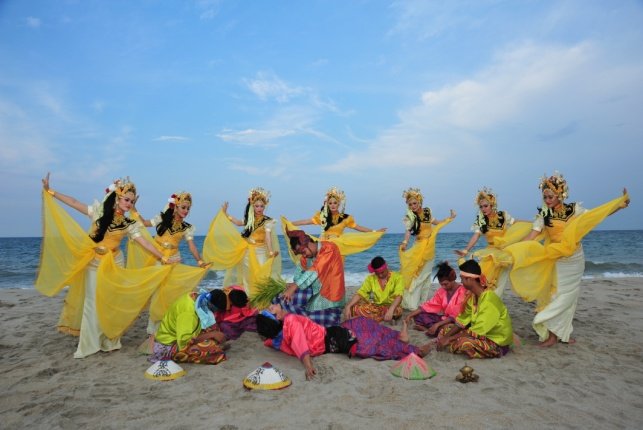
Ulek Mayang is considered to be an ode to the powers of the sea. The legend behind this dance tells of a
battle between seven sea princesses and a bomoh.
I’m telling you, among all these dances, this dance gave me chills. Like a full-on full body reaction. I remember back in college when we had cultural night, my friend had to be the princess that fell in love with the fisherman.
Her eyes, man. It’s like they were staring deep into my soul when our eyes met. Her movements were super smooth and I remembered feeling goosebumps up and down my whole body. After the performance, she locked herself in the dressing room and didn’t come out for an hour. When she finally did, she was all smiles and asked “so, how did I do?”
How’d you do?! Girl, you just got possessed.
I mean, the song itself, when played, is said to invoke hysterias, so it makes sense that the dance would be equally, if not more, scary. Nonetheless, if you ever get the chance, please watch the play. It’s so beautiful and so haunting. It’s definitely an experience. But take it with a grain of salt and don’t overthink it so much. Just sit back and enjoy the show.
Mak Yong
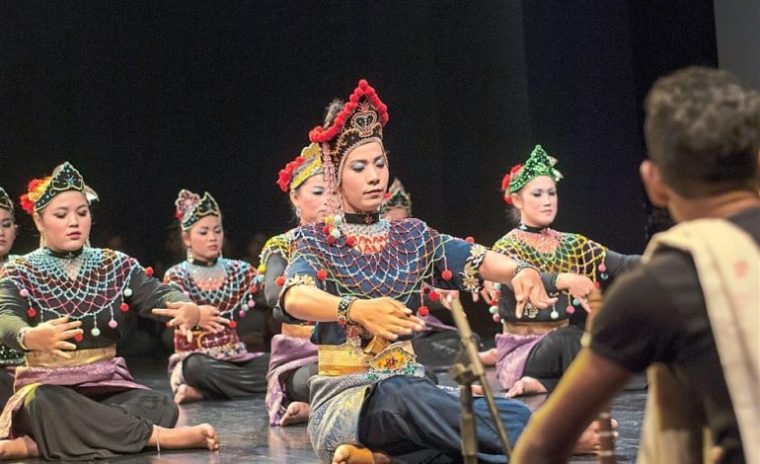
This dance was made popular in Kelantan dating back to the early 1920s. But it was rumoured to have been performed at least 800 years ago. Yeah, it’s old old. The dance was originally performed as a form of folk theatre involving rituals connected with praising an entity that has healing powers. So in simple words, Mak Yong is a combination of a healing ritual and a play.
The dance can also be called Mak Yong Mak Puteri and involves trance dancing and spirit possession through the use of the traditional healing ritual called Main Puteri. Although widely condemned and frowned upon, these healing practices are still done in villages and in more traditional towns.
It was banned in the late 1960’s and 70’s because of “un-islamic” elements (i.e. possession) and protests of the ladies dancing showing too much skin.
But it was allowed to be brought back under “shariah-compliant” rules in 2019. That’s two decades of being banned! These performances are now modernised and stripped of the old spiritual rituals. And because their music is not played often, the songs are simplified.
Nowadays, Mak Yong is seldom performed as the priority is often focused on the modern ethnic group dances like joget. It is, however, sometimes still staged to mark state events as well as for tourists.
A Fading Scene
These dances are certainly… unique, for the lack of a better word. And they’re also slowly withering away to make room for more modern dances with less violent and dangerous nature. But there’s no harm in remembering them.
Although they’re a little strange, they’re still incredibly interesting and hold a lot of lore and history.
I’m a sucker for mystical stories, especially when it hits so close to home. The spiritual elements in the dances just lures you back in — even when you’re scared! So as the dances slowly disappear, let us still keep them in our memories so that someday, they can be revived once again to get the spotlight they truly deserve. Or maybe they’ll make a lot of movies to ensure that we never forget about them. Who knows with Malaysia.
If you’re like me and you’re a fan of Malaysia’s spiritual folklore and the works, why don’t you check out:
Why Are Malaysians So Superstitious?
